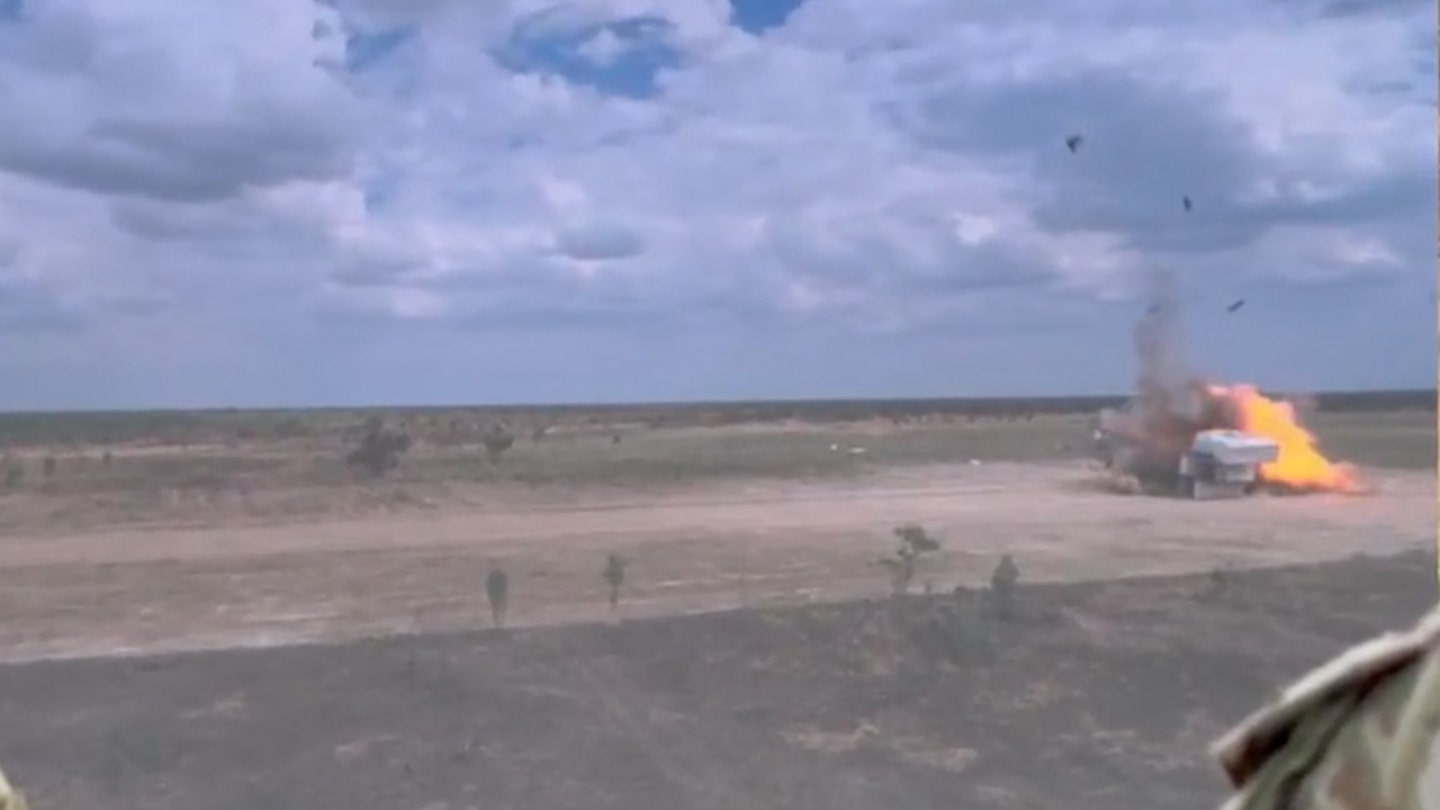NEWYou now have the option to listen to news articles!
In a significant development, the Army recently carried out a live-fire test of its precision strike missiles in Australia, marking the first test of its kind west of the international dateline.
The test, captured in video footage obtained by Fox News Digital, represents a major advancement in the region’s long-range strike capabilities. The precision strike missile (PrSM) has a range of 300 miles and can target moving objects on land or at sea.
The test involved the launch of a U.S.-manufactured PrSM from a High Mobility Artillery Rocket System (HIMARS) vehicle owned by the Australian Defence Force.
It was a display of strength between the U.S. and Australia during a period of escalating tension in the Indo-Pacific.
“This is just one of the key measures we are taking across the region to prevent conflict, while ensuring that our soldiers have access to the best capabilities,” said Army Secretary Dan Driscoll, who witnessed the test at the Mount Bundey Training Area in Australia. “The PrSM enables our forces to pose a threat to land and maritime regions, which gives potential adversaries pause and enhances deterrence.”
In a significant development, the Army on Friday conducted a live-fire test of its precision strike missiles in Australia, the first ever west of the international dateline. (US Army )
The PrSM is the latest addition to the U.S. Army’s long-range precision fires (LRPF) portfolio, which includes HIMARS-launched missiles, the mid-range capability platform, and the Dark Eagle hypersonic missile.
While HIMARS has already proven its effectiveness in combat zones like Ukraine, where its rapid firing and ability to evade counterattack have made it a valuable system, the integration of the PrSM into this platform significantly enhances its strategic value.
The mobile launcher can be deployed from C-17 and C-130 aircraft, a U.S. Navy landing craft, and even from ships at sea, a capability that has been tested in joint exercises with the U.S. Navy and Marine Corps.
Unlike the 90-mile-range Extended Range Guided Multiple Launch Rocket System (ER GMLRS), which launches six missiles per HIMARS, the PrSM carries two missiles per launcher and can reach more than triple the distance.
When asked about the importance of these missiles in preparing for a potential conflict in the Indo-Pacific, Driscoll told reporters, “I believe that the ability to be agile, conceal your presence, and move swiftly is what is being rewarded in the current evolving conflict landscape, rather than large, static presences with conspicuous footprints.”

A U.S.-manufactured PrSM was launched from a High Mobility Artillery Rocket System vehicle owned by the Australian Defence Force. (US Army )
The deployment of HIMARS is ongoing across the U.S. Indo-Pacific Command, with the 25th Infantry Division in Hawaii recently receiving 16 launchers, a first for a light infantry division specializing in jungle and archipelagic warfare. Officials are looking to increase munitions production in collaboration with key allies.
The test follows reports that the Pentagon had privately urged Australia to clarify how it could assist in the event of a conflict arising from a Chinese invasion of Taiwan. Australia emphasized that it would not deploy troops preemptively in such a scenario.

Army Secretary Dan Driscoll, who observed the test at the Mount Bundey Training Area in Australia. (AP)
Australia does not allow permanent foreign military bases, but the U.S. is expanding its rotational presence at Australian facilities. Australia and the U.S. recently led a major joint exercise in Sydney involving 30,000 troops from 19 countries.
This development comes as Washington reconsiders the possibility of selling nuclear-powered, Virginia-class submarines to Sydney through the Australia-UK-US (AUKUS) agreement.
CLICK HERE TO GET THE FOX NEWS APP
The three nations would collaborate on designing a new class of submarines, with Australian production scheduled to commence in the 2040s.





